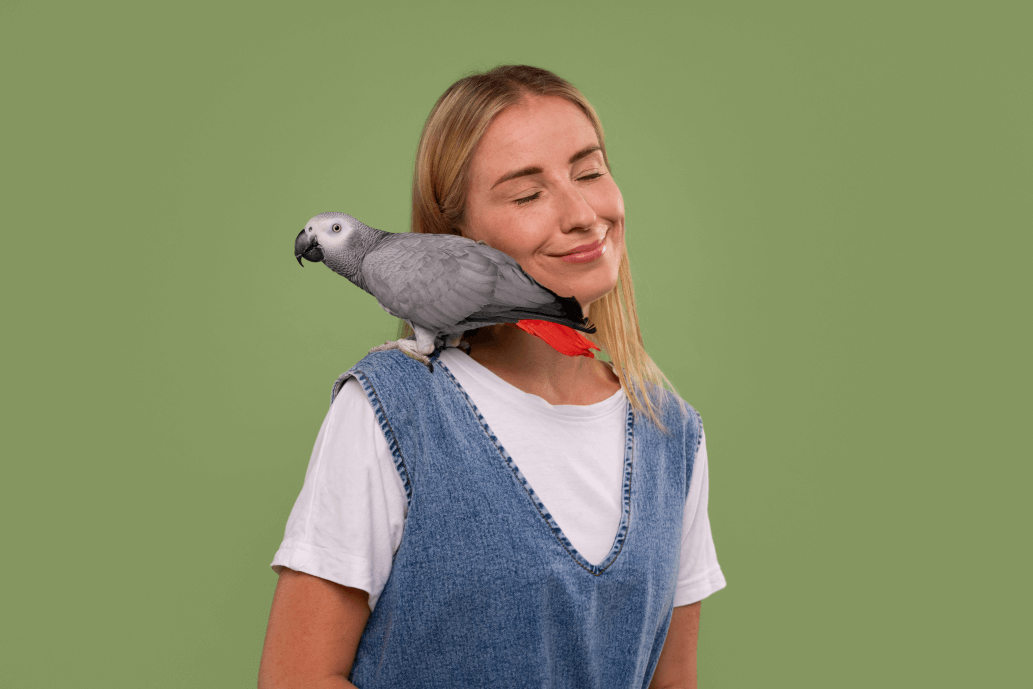How to Train Your Pet Parrot: A Friendly Guide for Beginners
Bringing a parrot into your home is a delightful and exciting experience. These beautiful birds are known for their intelligence, vibrant personalities, and ability to mimic sounds and words. However, like any pet, parrots require training and care to keep them happy and well-behaved. Training your parrot isn’t just about teaching them tricks or talking; it’s about building a strong bond, establishing routines, and ensuring they feel comfortable in their environment.
If you’re new to parrot training or looking to enhance your skills, this guide will help you get started in a friendly and straightforward manner.
1. Building Trust: The First Step
Before you begin teaching your parrot any commands or tricks, the most crucial aspect is to build trust. Parrots are sensitive creatures, and they need to feel safe around you to respond positively to training. Here are some ways to earn your parrot’s trust:
- Be Calm and Gentle: Speak softly and move slowly around your parrot. Loud noises and sudden movements can make them anxious or scared.
- Spend Time Near Their Cage: Sit close to your parrot’s cage, talk to them in a soothing voice, and offer treats from your hand. This helps them become accustomed to your presence and associate you with positive experiences.
- Offer Treats: Discover what your parrot’s favorite treat is, whether it’s a piece of fruit or a special bird snack. Handing out treats is an excellent way to encourage them to come closer to you.
2. Basic Training Commands
Once your parrot feels at ease with you, it’s time to start basic training. Teaching your parrot simple commands not only simplifies interactions but also keeps your bird mentally engaged.
Step Up Command
The “Step Up” command is crucial for handling your parrot. It teaches them to step onto your finger or hand when prompted, which is useful for getting them out of the cage, moving them around, or just spending time together.
How to Teach It:
- Gently position your finger in front of your parrot’s feet.
- Clearly say “Step up” in a calm voice.
- If they don’t respond, lightly tap their chest with your finger to encourage them to lift their foot and step onto your hand.
- As soon as they step up, reward them immediately with praise and a treat.
- Practice this daily until your parrot consistently responds.
Step Down Command
After your parrot has mastered stepping up, it’s important for them to learn how to step down. This command is handy when you want them to leave your hand and return to their perch or cage.
How to Teach It:
- Bring your parrot close to their perch or cage.
- Say “Step down” and gently position your hand near the perch.
- If they hesitate, lightly tap their chest as you did with the “Step up” command.
- When they step onto the perch, reward them with a treat.
- Repeat this process until they grasp the command.
3. Teaching Your Parrot to Talk
One of the most thrilling aspects of having a parrot is their ability to talk! While not every parrot will learn to speak, many species, such as African Greys, Amazons, and Budgies, are famous for their talking skills. If you want to teach your parrot a few words, follow these steps:
Start with Simple Words
- Repetition is Key: Clearly say the chosen word often. Use it in context, like saying “Hello” when you walk into the room or “Goodbye” when you leave. Parrots tend to pick up words they hear repeatedly.
- Reward Talking Attempts: If your parrot tries to mimic the sound, even if it’s not perfect, reward them with a treat and some praise. This will motivate them to keep trying.
- Practice Daily: Dedicate a few minutes each day to practice words with your parrot. Be patient—learning to talk can take time, and some parrots may learn faster than others.
Mimicking Sounds
In addition to talking, parrots are great at mimicking sounds they hear, like the doorbell or a ringing phone. If your parrot enjoys mimicking, encourage this behavior by responding positively when they copy sounds, offering treats and praise each time they do it.
4. Fun Tricks to Teach Your Parrot
Once your parrot has learned the basics, you can start teaching them some fun tricks! These tricks are not only entertaining but also offer mental stimulation and exercise for your bird.
Wave Hello
Teaching your parrot to wave is a simple and charming trick.
How to Teach It:
- Raise your hand in a waving motion.
- Say “Wave” while gently lifting one of your parrot’s feet with your finger.
- After a few attempts, your parrot should start lifting their foot on their own when they hear the command.
- Reward them with a treat and praise each time they do it.
Turn Around
This trick involves your parrot spinning in a circle on command.
How to Teach It:
- Hold a treat in front of your parrot and slowly move it in a circle around them.
- As they follow the treat with their body, say “Turn around.”
- Once they complete the circle, give them the treat.
- Keep practicing until they can spin without needing the treat as a guide.
Fetch
Yes, parrots can definitely play fetch! This can be a delightful game for both you and your feathered friend.
How to Teach It:
- Choose a small, lightweight toy that your parrot can easily grasp.
- Place the toy in front of your parrot and say “Fetch.”
- When they pick up the toy, reward them with a treat or some praise.
- Gradually start tossing the toy a short distance while using the command “Fetch.” Encourage your parrot to bring it back by rewarding them when they return with the toy.
5. Patience and Positive Reinforcement
Training a parrot takes time, patience, and a lot of positive reinforcement. Parrots respond best to rewards like treats, praise, and affection. Avoid using punishment or negative reinforcement, as this can damage your bond with your bird and make them anxious.
- Short Sessions: Keep training sessions brief—around 10-15 minutes. Parrots can lose interest or become frustrated if sessions drag on too long.
- Be Consistent: Consistency is crucial. Practice commands and tricks daily so your parrot retains what they’ve learned.
- Celebrate Small Wins: Celebrate even the smallest improvements. Training is a gradual process, but every little progress deserves recognition.
6. Creating a Safe and Stimulating Environment
Alongside training, it’s crucial to ensure your parrot has a safe and enriching space. The cage should be spacious enough for them to stretch their wings, climb, and explore. Include toys that promote mental engagement, such as puzzle feeders or interactive playthings.
Ensure your parrot has regular time outside the cage to stretch and interact with you. This not only helps to alleviate boredom but also fosters a strong connection between you and your bird.
Wrapping It Up
Training your pet parrot can be a fulfilling and enjoyable experience. It enhances your bond, offers mental stimulation, and keeps your bird active and engaged. Whether you’re teaching them basic commands, introducing new tricks, or encouraging them to talk, remember that patience and a positive attitude are essential. Each bird learns at its own pace, so savor the journey and enjoy training your feathered companion!
